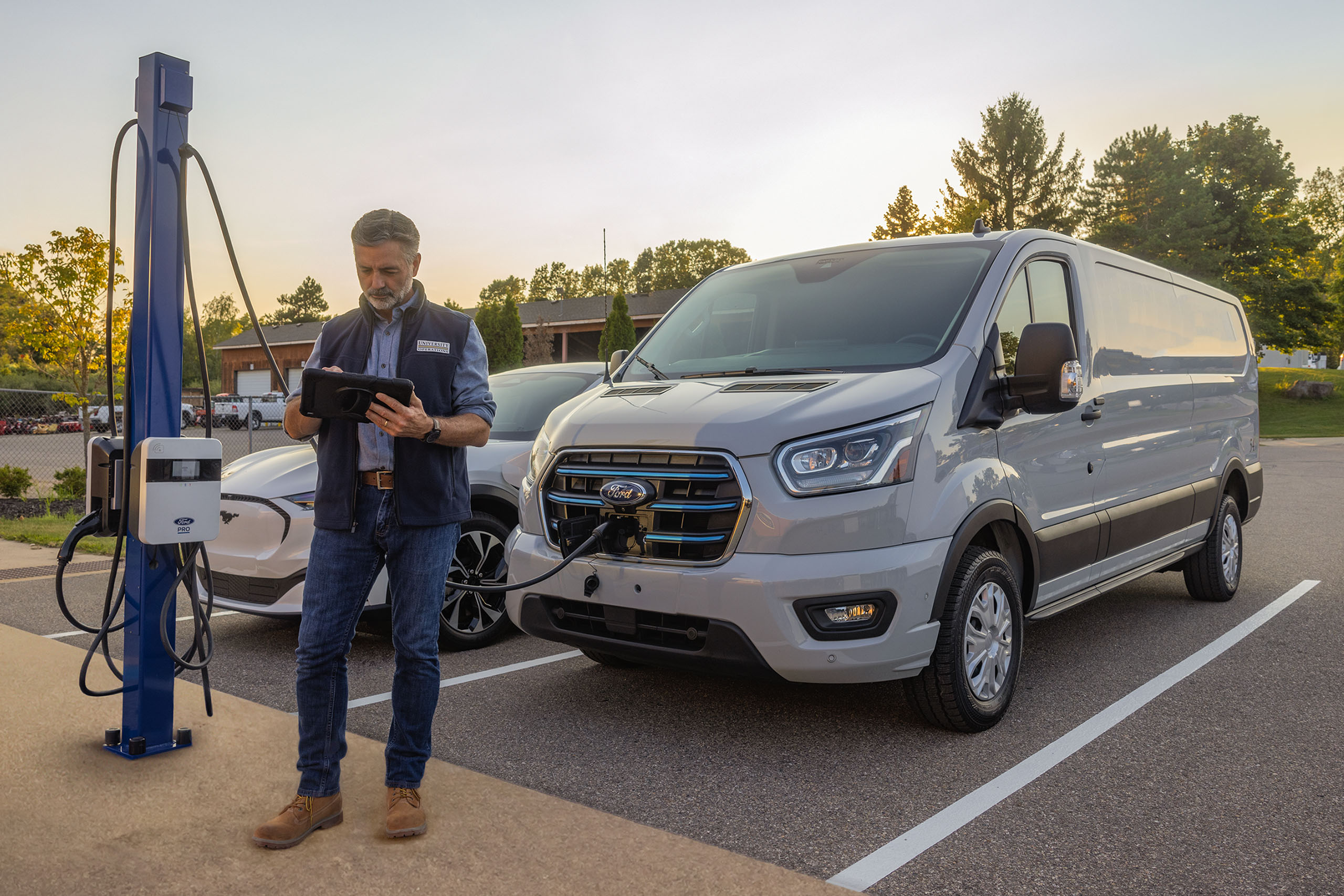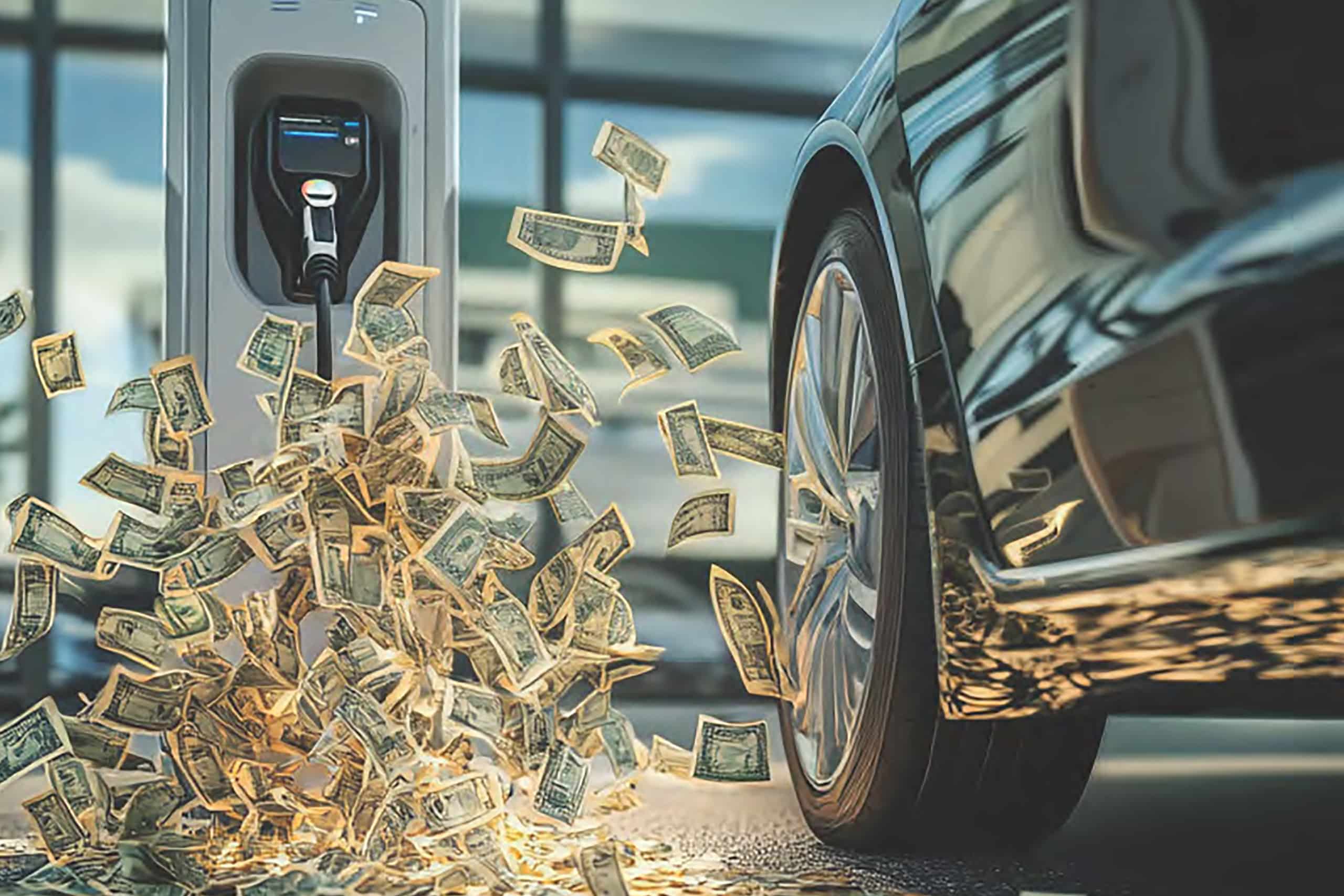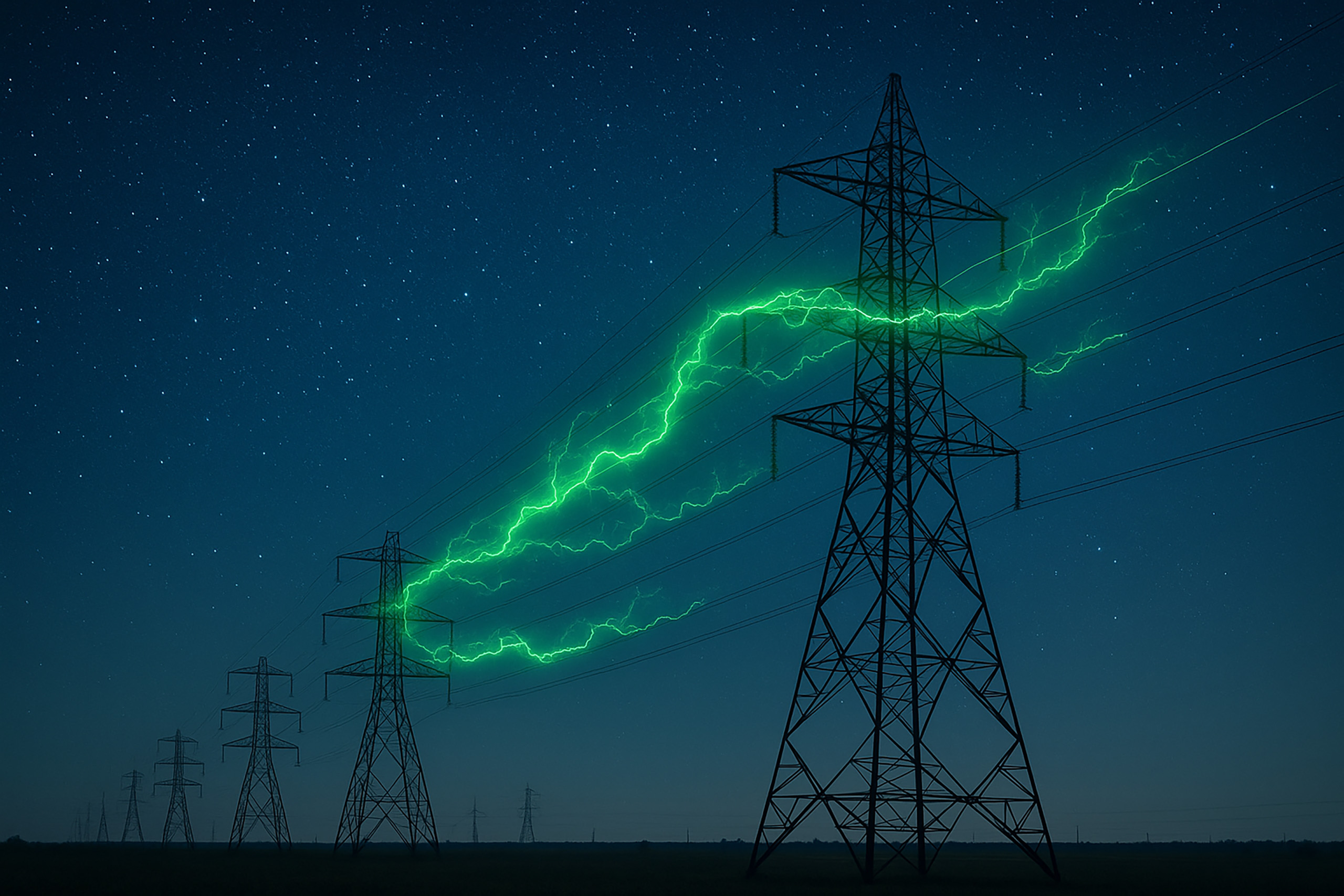
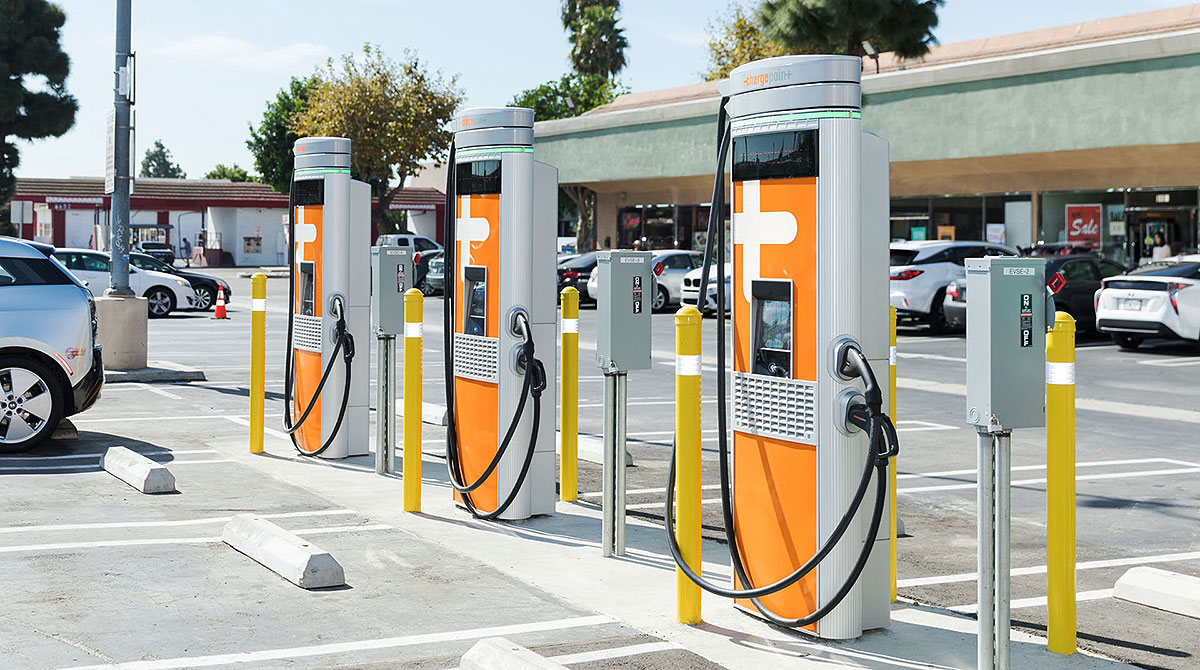
In the next five years, what will your Auto Dealerships’ inventory look like? Original equipment manufacturers (OEMs) are telling Future Energy they expect up to 40% of the cars on the lot will be electric vehicles (EVs).
The growth of the market for EVs will affect how you manage your inventory. Now, your porters may drive down the road to refuel a vehicle. By contrast, you’ll be charging your EV inventory on your lot.
Inventory EV charging cycles require thinking about infrastructure, proactive scheduling, and managing power throughout your entire business.
Forecasting the Charge
Your porter can fill a gas-powered car in a few minutes. An EV could take overnight to fully charge. As you can see the refueling of an ICE vehicle is very different from charging an electric vehicle. This is something any Dealership or Fleet manager will have to account for. Learn more about EV inventory and fleet management below.
EV Charger Types
The optimization of EV charging cycles requires a combination of level 2 and level 3 chargers. Level 2 chargers use 240-volt power and output up to 20 kW of AC power. A level 2 can charge an EV at a rate of about 18 to 40 miles an hour.
On the other hand, level 3 chargers are the fastest available. Also known as direct-current fast chargers (DCFC), a level 3 charger has an output of up to 350 kW. A level 3 charger can deliver more than one hundred miles of range in 15 minutes.
EV Charger Combinations
Future Energy helps you think about how to optimize your inventory’s EV charging cycles before installation begins.
Future Energy finds that the average time a vehicle sits on the lot is seventy days, with an optimal battery charge level of around 70%.
You can proactively manage EV charging by cycling your inventory through level 2 charging when your business’s power use is low, such as overnight. Then a level 3 charger tops off the remaining 30% as the customer finishes the sale.
Future Energy’s Software Solution
You can manage inventory EV charging cycles through software. Future Energy’s software solution, Interface, connects all the EVs on your lot in a charging network. You can schedule your inventory EV charging cycles to optimize cost and your porters’ time.
Interface’s algorithms also predict how much charge the EV loses as it sits in the lot, what’s known as “discharge.” Extreme weather—temperatures above or below seventy degrees—affects discharge. Also, there’s an ideal level at which a battery minimizes discharge. In other words, if the battery is charged above 90%, it will discharge faster.
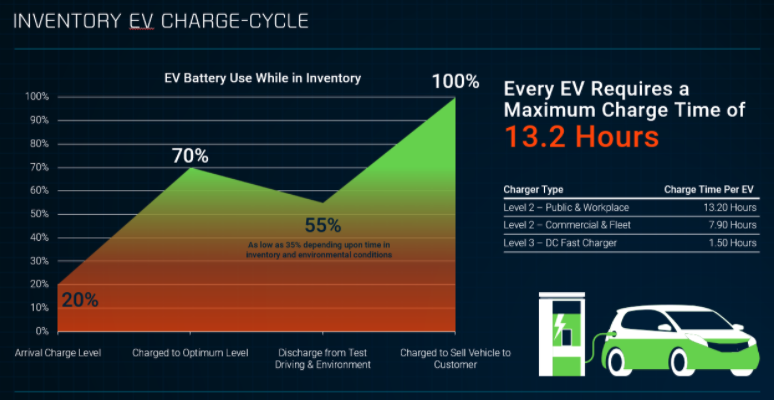
Managing Power Consumption
Interface’s ability to manage networked chargers can save you money by helping make sure you’re not using too much energy.
Networked Chargers Can Offer Savings
The utility company offers special rates for off-peak charging. That means if you schedule most of your inventory charging overnight, you pay less per kilowatt. Utilities charge businesses higher rates for energy use during the day.
Furthermore, you can plan to leave your level 2 chargers open during the day. That lessens the power draw since you won’t have level 2 and level 3 chargers running simultaneously.
Infrastructure Design
It’s critical that the EV chargers for employees, service bays, showroom, and the public don’t affect inventory management. All draw power against the infrastructure.
Many states require dealerships to install public-facing chargers to minimize risk to power consumption. Future Energy recommends a separate circuit for public-facing chargers. This eliminates the need to predict your public EV traffic and simplifies your dealership’s EV inventory power management.
Public EV chargers would use a utility rate that remains constant throughout the day. Future Energy helps you work with the utility to find the rate design that optimizes the rest of your operations.
Load Shedding
When demand for electricity exceeds supply, the utility uses planned selected interruptions in service to avoid problems for the entire grid. This process is known as load shedding.
Often, you can agree to participate in load shedding in exchange for reduced utility rates.
Overall EV Charging Cost
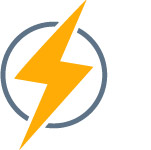
How much additional cost will you incur once you install EV chargers? A level 2 charger uses about 7.2 kilowatts. Five level 2 chargers equate to about thirty-six kilowatts. For comparison, the power consumption of five level 2 chargers exceeds that of an eight-ton air conditioner.
Another factor in cost is the increase in utility rates. Historically, utility rates escalate around 2.5% per year. In five years, that could equate to a potential 10%–12% increase. This is why Interface is such an important factor in keeping costs down for business long term.
Keeping Your EV Inventory Ready for Sales
You have a half hour to deliver a new vehicle to the customer. That’s not enough time to fully charge an EV.
Level 3 Charging
An EV charged to 70% just needs to be “topped off” when it’s sold. A level 3 charger is great for this purpose. As the customer is finalizing the sale, your porter can charge the remaining 30% of the EV battery. Using a level 3 charger, the process should take under a half hour.
Integrating Inventory Management
Interface helps you manage the complicated dance between level 2 charging of EV inventory on the lot and level 3 charging for an EV that’s been sold.
Your porters can quickly check Interface’s dashboard from any device — such as a cell phone — for real-time access to the charge level of every EV on your property. The porter will know instantly how much level 3 charge is required to charge the EV fully and how long it will take. And because Interface connects every electrical device on your property, the porters can see which charging ports are open and even proactively schedule charging when necessary.
Creating a Prioritization Schedule
Using Interface, you can prioritize which vehicles in your inventory require the most attention. For instance, you can set proactive alarms to notify you when a vehicle reaches below 60% charge. That way, you can easily see which vehicles need charging and ensure that a customer won’t have to wait long for a fully charged EV.
Preparing for the Future of EV Inventory
Global passenger EV sales rose 94% year-on-year in the third quarter of 2021, according to Bloomberg. The time to start planning for the increase in EV inventory is now. Contact Future Energy today for help in preparing to manage your inventory EV charging cycles.

